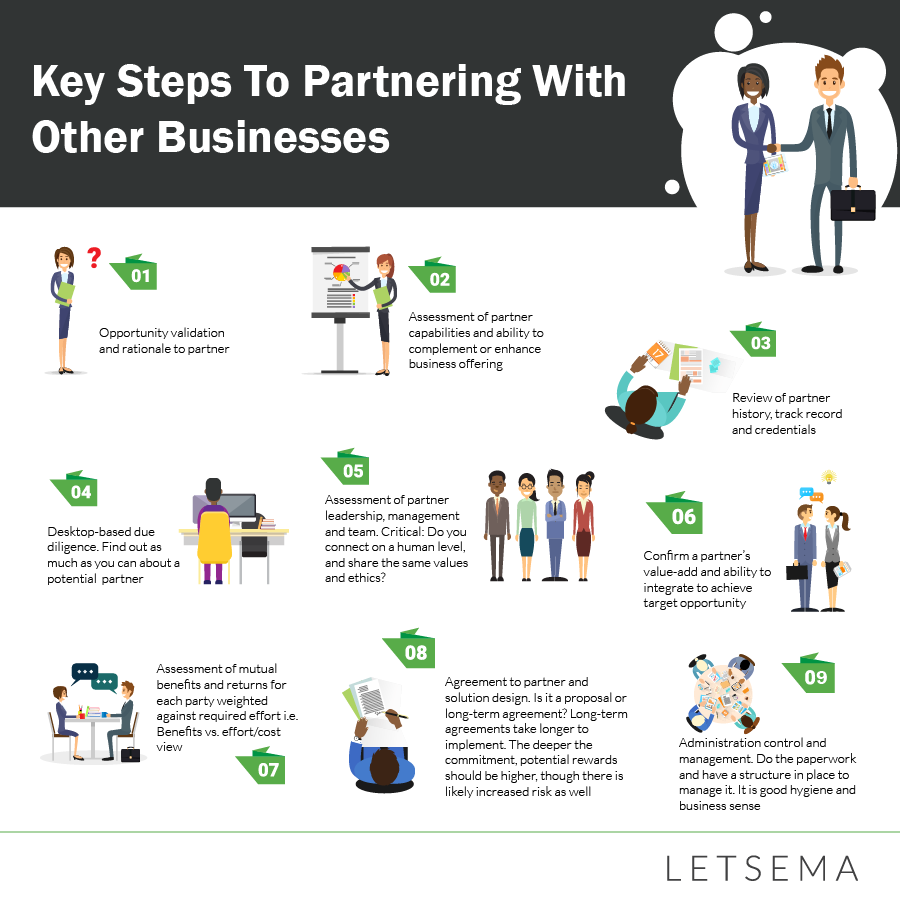What’s driving the move towards business partnering? Why is it important?
Partnering has accelerated in recent times, and specifically in modern business due to conglomerates lacking agility, suffering from their own entropy, and rise of smaller, mid-sized businesses and specialists in their respective fields. This trend is driving the convergence of businesses working together to collectively solve problems and find opportunities using their strengths and in return gaining commercial benefits.
In the consulting field, I particularly have noticed an increased uptick in partnerships in the last five years, especially those of a value-add bundling nature or focused on industry vertical growth. While this trend has been gradually gaining prominence, the COVID-19 pandemic has forced many businesses to move towards partnering, in search of a competitive edge, as a means to be more resilient or anti-fragile, leverage their strengths and manage risk.
What should be in place before seeking ideal business partner for that competitive edge?
It’s important for a business to leverage partnerships for the right opportunities and timing.
Opportunities can be either quite specific and focused single events e.g. tendering, where requirements can be onerous where smaller players need to group together to meet minimum thresholds and requirements. You could also partner at a broader level, where the partnership is built around a thematic such as solving an industry-wide opportunity via market growth partner, channel partners or joint partnerships to name a few.
Most importantly, as a firm you need to be ready to partner. Ensure that, as a first step, your leadership and management teams are open to partnering. If you are the primary party in a partnership opportunity, ensure that the necessary opportunity validation, benefits view and commercial sense check has occurred so that partnering is the desired route. Critical to this is having processes in place to vet potential partners you select or that approach you.
“You always have to ask: What are you gaining from this and what is the effort required?”
If an organisation does not commercially sense check a potential partnership, it is highly possible that such a partnership will favour one party over another, the opposite of what a partnership is meant to achieve.
How do you assess or qualify a potential partner?
Often the best approach to partnering for a competitive edge comes with preparation and having systems in place that support such a process. This process should also be baked in to the business as part of its partnership strategy. What this means is that every year or periodically on a strategic level, markets or new clients should be identified that can be attained with partners and/or defensive plays. For example, the business can grow into new regions or industries through partnerships. Alternatively, it can make a defensive play to protect its market share through partnering with value-add players to provide its customer base with added services or experiences.
When assessing a potential partner, it is important to develop a partnership framework that helps your team/s define and assess potential partners on an opportunity-by-opportunity basis. For example, some key steps include:

Among the points listed above, in my experience the human element is the most important one. If you sense, a gut feel, that on values, ethics or an interaction basis there may be problems down the road, choose a different partner. First impressions count, but often it takes a few engagements to fully appreciate who the other person or party is sitting across the table or on the opposing screen. Never rush large partnering opportunities. Mistakes can become extremely expensive.
Once that partner is found, what happens next? What steps need to be taken?
Many partnership fail primarily because after they are established, it is assumed “it will all work out”. Much like a marriage, partnerships in business go far beyond the wedding. It is precisely after the partnership is established where the most effort must be put in, especially in mid-to-large partnerships.
“You have to manage and invest in the partnership.”
Do not underestimate the strain and cost a partnership can place on your resources, especially if it is a significant partnership. Planting the seed is nothing unless you water it daily. Similarly, businesses must be prepared to set aside capacity in some format – virtual, built or otherwise – for teams to own and manage partners and opportunities. It is very similar to how you manage key client accounts. That level of detail and attention is required.
A partnership highly invested in and which meets the above criteria will realise not only opportunity-specific value (or in some cases provide a ticket to the game). It allows partners to play competitively in a focus segment over time. Furthermore, the ability to scale while being flexible in a partnership, and leverage other partners as needed in controlled fashion can, in my experience, lead to success through managed growth, lower costs and improved risk management.
In this way, partners working efficiently together leads to cost-effectiveness and mutual strength, creating that competitive edge many firms are looking for. DM/BM
To learn how Nirojan and Letsema’s Strategy & Enablement can help your organisation partner for a competitive edge, read more here or email [email protected]. You can also connect with Nirojan on LinkedIn.
















 Become an Insider
Become an Insider
Comments - Please login in order to comment.